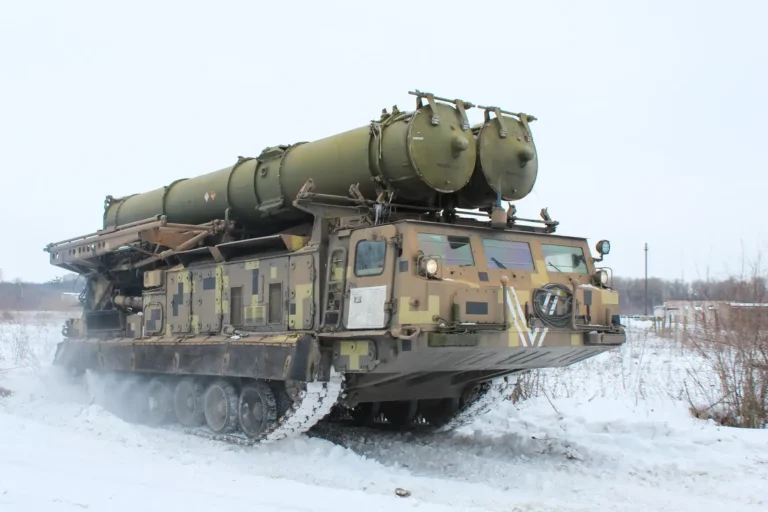Follow Us:

Share
On December 18, 2024, the U.S. Department of Defense (DoD) released its highly anticipated annual report detailing China’s military and security advancements. Among the key insights shared, the report placed significant emphasis on the continued modernization of the People’s Liberation Army Rocket Force (PLARF), the branch of the Chinese military responsible for overseeing the country’s growing missile arsenal.
The PLARF, established in 2015, manages a diverse and expanding range of land-based missiles, which have become increasingly pivotal in China’s military strategy. As of late 2024, the PLARF controls over 3,100 ballistic missiles, ranging from short-range tactical weapons to advanced intercontinental ballistic missiles (ICBMs).
The force is structured to handle both nuclear and conventional missile operations, with distinct command structures for each. Nuclear missions are directly overseen by China’s Central Military Commission (CMC), while conventional missile operations are likely directed by regional Theater Commanders.

This vast missile force is organized into seven combat missile bases, each overseeing six to eight missile brigades. Additionally, three support bases are tasked with missile testing, infrastructure development, and warhead handling. Collectively, the PLARF is comprised of at least 40 missile brigades, reflecting China’s strong commitment to advancing its missile capabilities.
The report highlights a major trend within the PLARF: the ongoing modernization of its missile inventory, which now includes several key categories of missiles. These missiles serve to extend China’s reach and precision in targeting critical military and strategic sites.

The PLARF operates around 900 short-range ballistic missiles (SRBMs). These missiles are designed for tactical strikes at shorter ranges but are highly mobile, allowing for rapid deployment and flexibility in targeting regional threats. The most notable SRBMs in China’s arsenal include:
In addition to SRBMs, the PLARF also operates over 1,300 medium-range ballistic missiles (MRBMs). These missiles further expand China’s strike capabilities, allowing it to target strategic locations across a wider range. Prominent missiles in this category include:
China’s missile force also includes approximately 500 intermediate-range ballistic missiles (IRBMs), capable of striking targets up to 4,000 kilometers away. The key IRBM systems include:
The PLARF also operates 400 ground-launched cruise missiles (GLCMs), such as the CJ-10 and CJ-100, with ranges between 1,500 and 2,000 kilometers. These missiles allow China to carry out precise strikes against military targets and critical infrastructure.
The newly developed CJ-100 (or DF-100) has an even longer range of 3,000 to 4,000 kilometers and can travel at speeds of Mach 4, further enhancing China’s strike capabilities.
The PLARF’s inventory includes 400 ICBMs, which are capable of reaching targets over 11,000 kilometers away. These missiles are essential for China’s strategic nuclear deterrence. Some of the most advanced ICBMs in the PLARF’s arsenal include:
The PLARF’s missile capabilities have been steadily improving, and the force has conducted numerous drills to ensure that its readiness matches its growing capabilities. Notably, the PLARF participated in “Joint Sword” exercises in 2023, simulating coordinated missile strikes in a scenario that involved encircling Taiwan. These exercises demonstrated the ability of China’s missile forces to work in tandem with other branches of the military, including the People’s Liberation Army Navy (PLAN) and land-based aircraft.

Additionally, the PLARF conducted a highly publicized intercontinental missile test in September 2024, launching an ICBM from Hainan Island into the South Pacific. This marked China’s first ICBM test in the Pacific since 1980 and emphasized its long-range strike capabilities, signaling to the world China’s growing ability to challenge U.S. missile defenses.
Looking ahead, the PLARF continues to modernize its missile forces, focusing on building a more formidable and flexible strategic deterrence. China is investing in new technologies such as MIRVs for its ICBMs, which will significantly increase the potential effectiveness of its nuclear arsenal.
Furthermore, satellite imagery indicates that the PLARF is constructing new missile silo fields, enhancing its capacity to launch multiple missiles simultaneously and withstand potential preemptive strikes.

The modernization efforts of the PLARF align with China’s broader objectives of strengthening its nuclear deterrence, expanding its regional influence, and asserting its dominance in the Indo-Pacific.
As China’s missile capabilities continue to grow, the international community will need to closely monitor these developments to better understand the strategic implications for global security.
Share
Defense Feeds is publication focusing on informing, engaging, and empowering the world by providing accurate information from defense technology.
Powered by Defense Feeds © 2025 – All rights reserved.